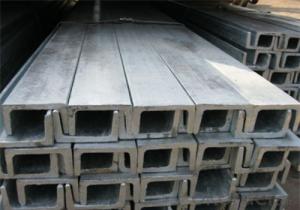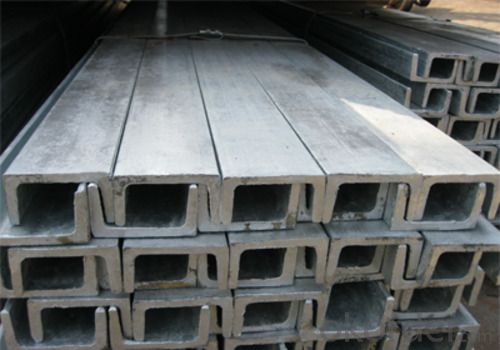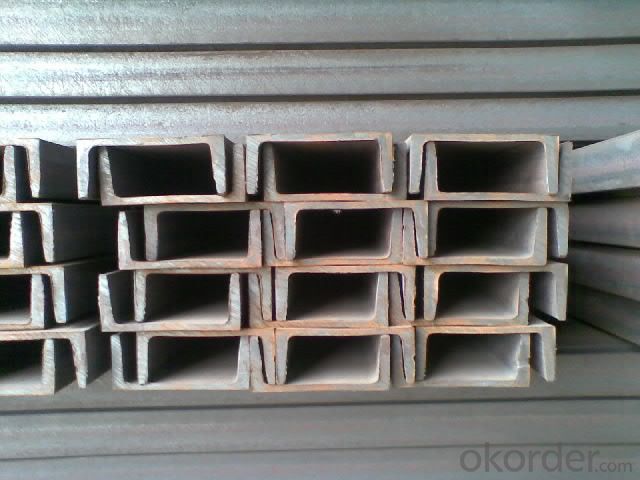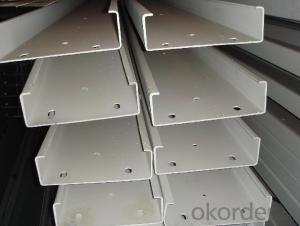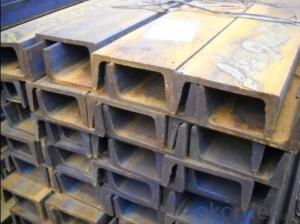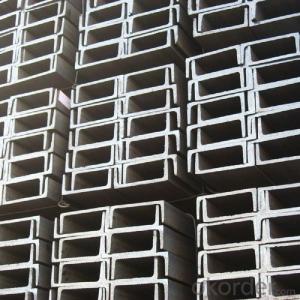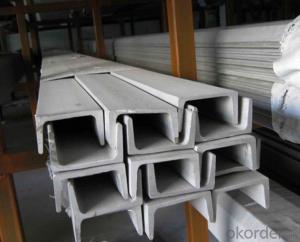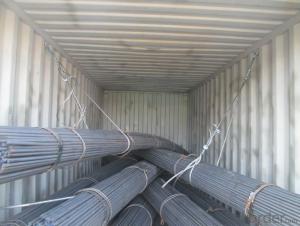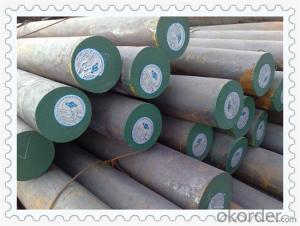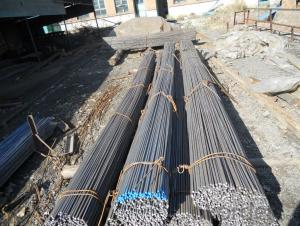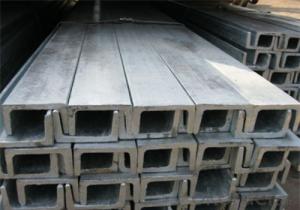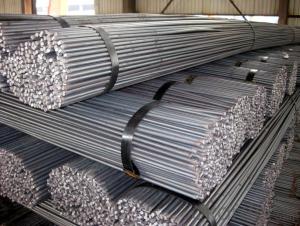Steel Channel Bar A36 Hot Rolled Iron Bar Made In China
- Loading Port:
- Tianjin
- Payment Terms:
- TT or LC
- Min Order Qty:
- 30 m.t.
- Supply Capability:
- 35000 m.t./month
OKorder Service Pledge
OKorder Financial Service
You Might Also Like
Product Description:
OKorder is offering Steel Channel Bar A36 Hot Rolled Iron Bar Made In China at great prices with worldwide shipping. Our supplier is a world-class manufacturer of steel, with our products utilized the world over. OKorder annually supplies products to European, North American and Asian markets. We provide quotations within 24 hours of receiving an inquiry and guarantee competitive prices.
Product Applications:
Steel Channel Bar A36 Hot Rolled Iron Bar Made In China are ideal for structural applications and are widely used in the construction of buildings and bridges, and the manufacturing, petrochemical, and transportation industries.
Product Advantages:
OKorder's Steel Channel Bar A36 Hot Rolled Iron Bar Made In China are durable, strong, and resist corrosion.
Main Product Features:
· Premium quality
· Prompt delivery & seaworthy packing (30 days after receiving deposit)
· Corrosion resistance
· Can be recycled and reused
· Mill test certification
· Professional Service
· Competitive pricing
Product Specifications:
Material: SS400, ST37-2, A36, S235JRG1, Q235, Q345 etc.
Standard: GB/JIS/EN/ASTM/DIN and others.
Packing: In Bundle,Fasten by wire rod with tags.or according to client's requests.
Length: 6meter, 9meter, 12meter
| size (mm) | thickness (mm) | thickness (mm) | weight (kg/m) |
| 50*25 | 3.00~5.00 | 6.00 | 2.37~3.46 |
| 75*40 | 3.80 | 7.00 | 5.30 |
| 75*40 | 4.00 | 7.00 | 5.60 |
| 75*40 | 4.50 | 7.00 | 5.85 |
| 75*40 | 5.00 | 7.00 | 6.92 |
| 100*50 | 3.80 | 6.00 | 7.30 |
| 100*50 | 4.20 | 6.00 | 8.03 |
| 100*50 | 4.50 | 7.50 | 8.97 |
| 100*50 | 5.00 | 7.50 | 9.36 |
| 125*65 | 5.20 | 6.80 | 11.66 |
| 125*65 | 5.30 | 6.80 | 12.17 |
| 125*65 | 5.50 | 8.00 | 12.91 |
| 125*65 | 6.00 | 8.00 | 13.40 |
| 150*75 | 5.50 | 7.30 | 14.66 |
| 150*75 | 5.70 | 10.00 | 16.71 |
| 150*75 | 6.00 | 10.00 | 17.90 |
| 150*75 | 6.50 | 10.00 | 18.60 |
| 150*75 | 9.00 | 12.50 | 24.00 |
| 200*80 | 7.50 | 11.00 | 24.60 |
| 200*90 | 8.00 | 13.50 | 30.30 |
| 250*90 | 9.00 | 13.00 | 34.60 |
| 300*90 | 9.00 | 13.00 | 38.10 |
FAQ:
Q1: Why buy Materials & Equipment from OKorder.com?
A1: All products offered byOKorder.com are carefully selected from China's most reliable manufacturing enterprises. Through its ISO certifications, OKorder.com adheres to the highest standards and a commitment to supply chain safety and customer satisfaction.
Q2: How do we guarantee the quality of our products?
A2: We have established an advanced quality management system which conducts strict quality tests at every step, from raw materials to the final product. At the same time, we provide extensive follow-up service assurances as required.
Q3: How soon can we receive the product after purchase?
A3: Within three days of placing an order, we will begin production. The specific shipping date is dependent upon international and government factors, but is typically 7 to 10 workdays.

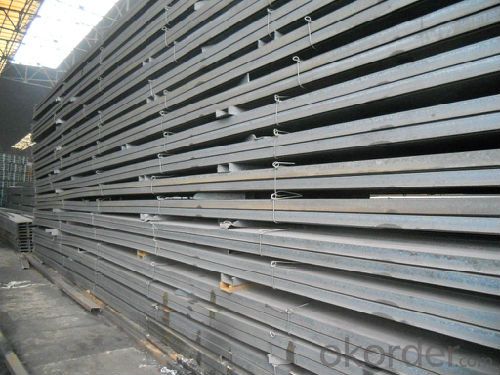
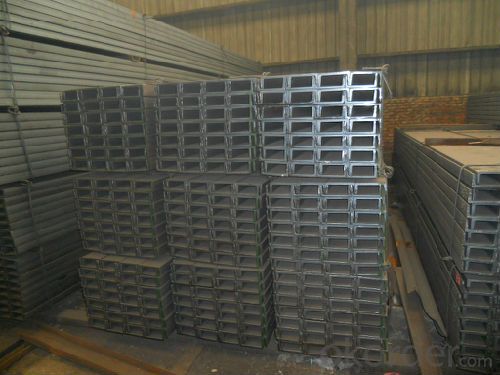
- Q: Can steel channels be used for cable tray systems?
- Steel channels are indeed suitable for cable tray systems. They offer a sturdy and long-lasting support structure for cable trays. Typically manufactured from galvanized steel, they possess exceptional resistance to corrosion, making them suitable for various indoor and outdoor uses. Furthermore, their high load-bearing capacity allows them to bear heavy cable loads without experiencing any deformation or failure. Moreover, steel channels can be effortlessly fabricated and tailored to meet specific project needs, such as varying widths, depths, and lengths. In conclusion, steel channels are a dependable and extensively utilized option for cable tray systems.
- Q: How do steel channels contribute to structural stability?
- The contribution of steel channels to structural stability is multifaceted. Primarily, they provide additional strength and support to the structure. The unique shape of steel channels, characterized by a wide base and narrow top, enables them to bear heavy loads and withstand bending or twisting forces. Consequently, they are highly suitable for incorporation into beams, columns, and other structural elements. Furthermore, steel channels can serve as reinforcement within concrete structures. When integrated into concrete, they enhance the overall strength and durability of the structure. The utilization of steel channels aids in distributing the load across a larger surface area, thereby diminishing stress concentrations and averting localized failures. Additionally, steel channels have the capacity to interconnect, forming a framework that heightens the rigidity of the structure. By establishing an interconnected network of steel channels, a system capable of resisting lateral forces such as wind or earthquakes is created. This fortifies the stability of the structure and safeguards it against collapse or damage during extreme events. Moreover, steel channels possess exceptional resistance to corrosion, a pivotal characteristic for ensuring long-term structural stability. Unlike other materials, steel channels do not easily deteriorate when exposed to moisture, chemicals, or extreme temperatures. This durability ensures the integrity of the building remains intact throughout its lifespan. In conclusion, steel channels play an indispensable role in augmenting the structural stability of buildings and other structures. Their strength, versatility, ability to reinforce concrete, and resistance to corrosion render them an essential component in the realm of construction.
- Q: Can steel channels be used for supporting overhead cranes?
- Indeed, overhead cranes can be supported by steel channels. Due to their strength and durability, steel channels are frequently utilized in the construction sector. They serve as a dependable and sturdy support system for overhead cranes, which are utilized in industrial environments for heavy lifting. By engineering and installing the steel channels correctly, they can effectively withstand the weight and stress exerted by the overhead cranes, thereby guaranteeing safe and efficient operation. Moreover, steel channels can be readily customized and fabricated to meet the specific demands of a project, rendering them a versatile option for supporting overhead cranes.
- Q: Can steel channels be used in conjunction with other building materials?
- Yes, steel channels can be used in conjunction with other building materials. Steel channels are versatile structural components commonly used in construction projects. They can be combined with various materials such as concrete, wood, glass, or other metals to create sturdy and customized building designs. The flexibility of steel channels allows them to be integrated seamlessly with other materials, enhancing the structural strength and overall performance of a building.
- Q: What are the different installation techniques for steel channels?
- Steel channels can be installed in various ways, depending on their intended use and specific requirements. Here are a few commonly used techniques: 1. Welding: By utilizing a welding machine, the steel channels can be fused to the supporting structure, creating a sturdy connection between the two. 2. Bolting: An alternative method involves securing the steel channels to the supporting structure using bolts. This technique is particularly useful when adjustability or removal of the channels is necessary. 3. Adhesive bonding: In certain cases, steel channels can be installed by bonding them to the supporting structure using a strong adhesive. This method is suitable when welding or bolting is not feasible. 4. Mechanical fasteners: For lighter-duty applications or temporary installations, mechanical fasteners like screws, nails, or rivets can be used to affix the steel channels. 5. Sliding or sliding-fit installation: In specific scenarios, steel channels can be easily installed by sliding them into pre-formed slots or grooves in the supporting structure. This facilitates effortless installation and removal as required. When selecting the appropriate installation technique for steel channels, it is crucial to consider the project's specific requirements, such as load-bearing capacity, durability, and ease of installation. Seeking guidance from a structural engineer or construction professional is advisable to ensure the proper installation method is chosen for the particular application.
- Q: Can steel channels be used for stair treads?
- Yes, steel channels can be used for stair treads. Steel channels provide strength and durability, making them suitable for supporting the weight and traffic of stair treads. Additionally, steel channels can be easily fabricated and customized to meet the specific requirements of staircases.
- Q: What are the different types of connections for steel channels?
- There are various types of connections for steel channels, including welded connections, bolted connections, and riveted connections. Welded connections involve joining the steel channels using a fusion process, resulting in a strong and seamless connection. Bolted connections use bolts or screws to secure the channels together, providing flexibility and ease of disassembly. Riveted connections involve using rivets to connect the channels, creating a durable and permanent connection. The choice of connection type depends on factors such as the load requirements, desired level of flexibility, and ease of installation.
- Q: What are the different types of steel channel supports?
- There are several types of steel channel supports, including C-channel supports, U-channel supports, Z-channel supports, and hat channel supports. These supports are commonly used in construction and engineering projects to provide structural stability and support for various applications.
- Q: Can steel channels be recycled?
- Indeed, it is possible to recycle steel channels. Steel, being a remarkably recyclable substance, can be reused indefinitely without compromising its qualities or durability. Once steel channels have served their purpose, they can be gathered, organized, and transported to recycling centers. The recycling procedure entails melting the steel channels to eliminate impurities, subsequently transforming the liquefied steel into fresh channels or alternative steel commodities. By engaging in this recycling process, not only are we conserving natural resources, but we are also diminishing the energy consumption and emissions connected to the production of new steel. Consequently, recycling steel channels represents an environmentally conscious decision that contributes to the establishment of a more sustainable future.
- Q: Can steel channels be used for framing?
- Certainly! Framing can be achieved using steel channels. These channels, known for their versatility, are extensively utilized in construction for multiple objectives, one of which is framing. Their robustness and longevity make them the ideal choice for providing structural reinforcement to buildings and other structures. By effortlessly welding or bolting steel channels together, a sturdy framework can be established to support walls, roofs, and floors. Due to their stability and resistance against bending and warping, steel channels are commonly employed in industrial, commercial, and residential construction ventures. Moreover, their availability in various sizes and thicknesses allows for flexibility in design and construction.
Send your message to us
Steel Channel Bar A36 Hot Rolled Iron Bar Made In China
- Loading Port:
- Tianjin
- Payment Terms:
- TT or LC
- Min Order Qty:
- 30 m.t.
- Supply Capability:
- 35000 m.t./month
OKorder Service Pledge
OKorder Financial Service
Similar products
Hot products
Hot Searches
Related keywords
